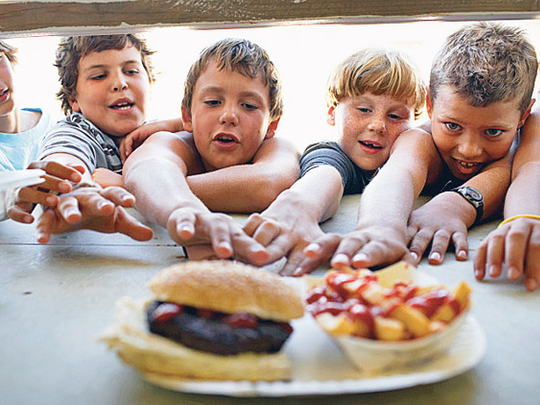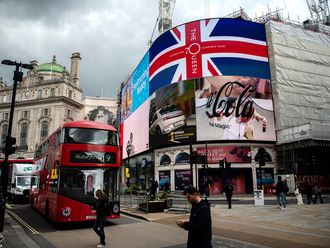
London: Children are risking their health by regularly buying unhealthy snacks from fast-food takeaways near their schools at lunchtime, a study reveals.
The findings have prompted calls for more headteachers to forbid pupils from leaving school during breaks.
Much of the junk food that pupils are buying at chip shops, burger bars and kebab houses breaches official healthy eating guidelines and contains potentially harmful amounts of salt, fat and calories. The quality is way below the nutritional standard of the Jamie Oliver-inspired meals now served in England's schools.
In the largest study of its kind, environmental health observers in 16 London boroughs observed secondary school pupils as they waited, often in long queues, to buy chips, chicken dishes, deep-fried sausages and pies. The officers then bought portions of the 73 dishes that were most popular with the children and had them nutritionally analysed. Most were unhealthy, some of them alarmingly so.
Recommended
Many contained a lot of salt. Fifty-four of the 73 meals contained more than is allowed under the nutrient-based standards that control the quality of school meals, and some had as much as 7.4 grammes more than the 6g daily recommended maximum for anyone aged 11 or over specified by the Food Standards Agency (FSA).
Some contained much more salt, fat or saturated fat than comparable dishes produced by high street food chains such as McDonald's, Kentucky Fried Chicken and Subway.
A meal bought at a chicken shop in south-west London contained 22.1g of saturated fat, the equivalent of five-and-a-half McDonald's "McChicken nuggets and large fries". Some of the meals analysed were up to two-and-a-half times over the official daily limit of 20g for saturated fat intake. One doner kebab had 48.7g.
As many as 69 of the 73 products were classed as red or amber using the traffic light food labelling scheme, because they contained excessive amounts of salt, fat or saturated fat.
The worst offenders included a doner kebab and fries containing 1,525 calories, which is 60 per cent of an adult man's 2,500-calorie daily recommended maximum; 7.23g of salt; and 25.2g of saturated fat, more than the FSA-endorsed 20g per day. "Parents will be shocked to realise that their teenagers could be getting more than a day's dose of salt before they even get home from school," said Rob Rees, chairman of the School Food Trust, the government body that oversees the quality of what pupils eat at school.
Lunchtime
He led calls last night for more schools to lock pupils in at lunchtime to stop them buying such food. "Some secondary schools have introduced stay-on-site policies, either for younger pupils or across the whole school. But we need more to do the same," said Rees, who is a chef.
"Kids that go offsite can end up late for afternoon lessons, which is ridiculous. Stay-on-site helps tackle that, reduces litter and the kids get on much better with each other," he added.











